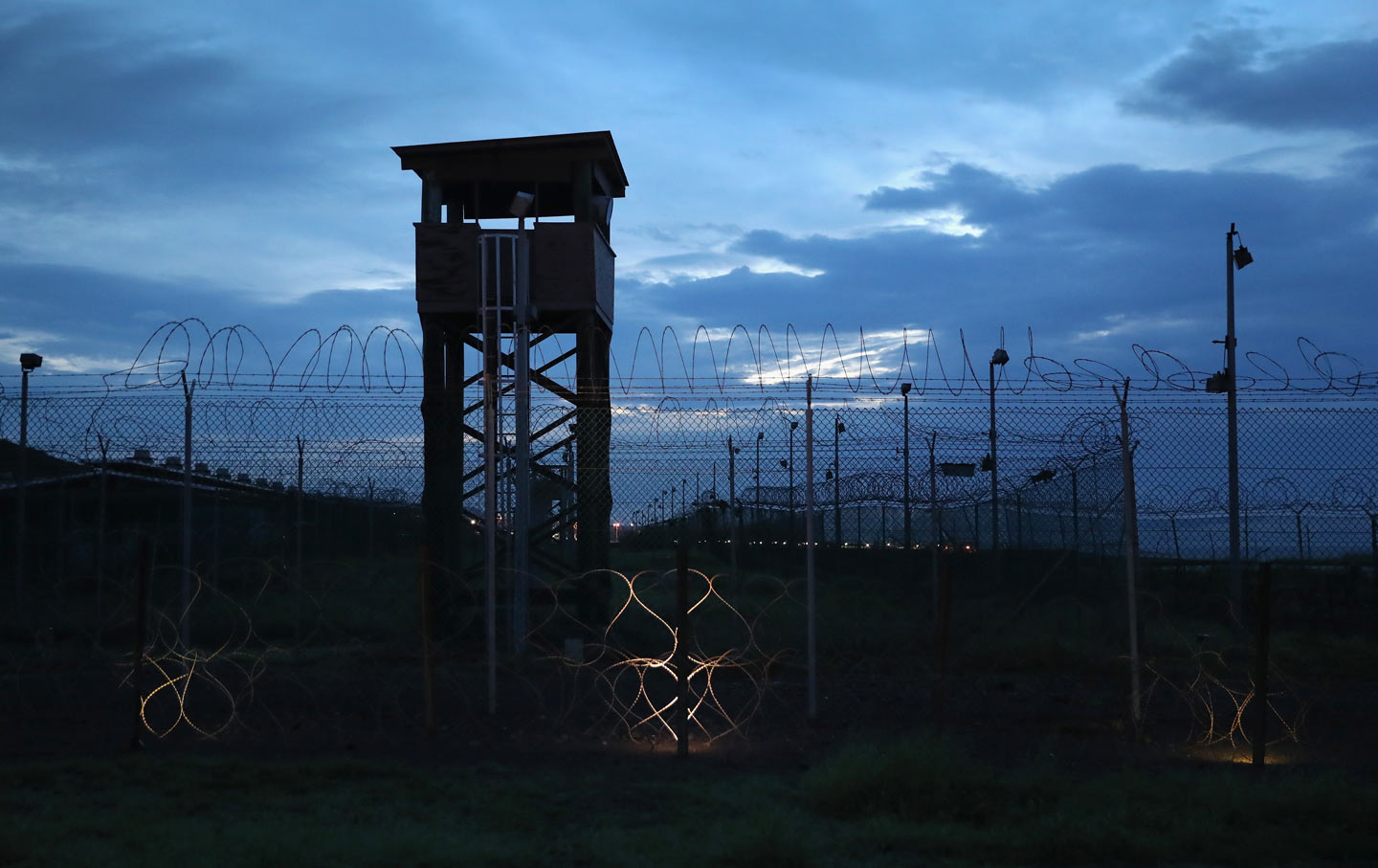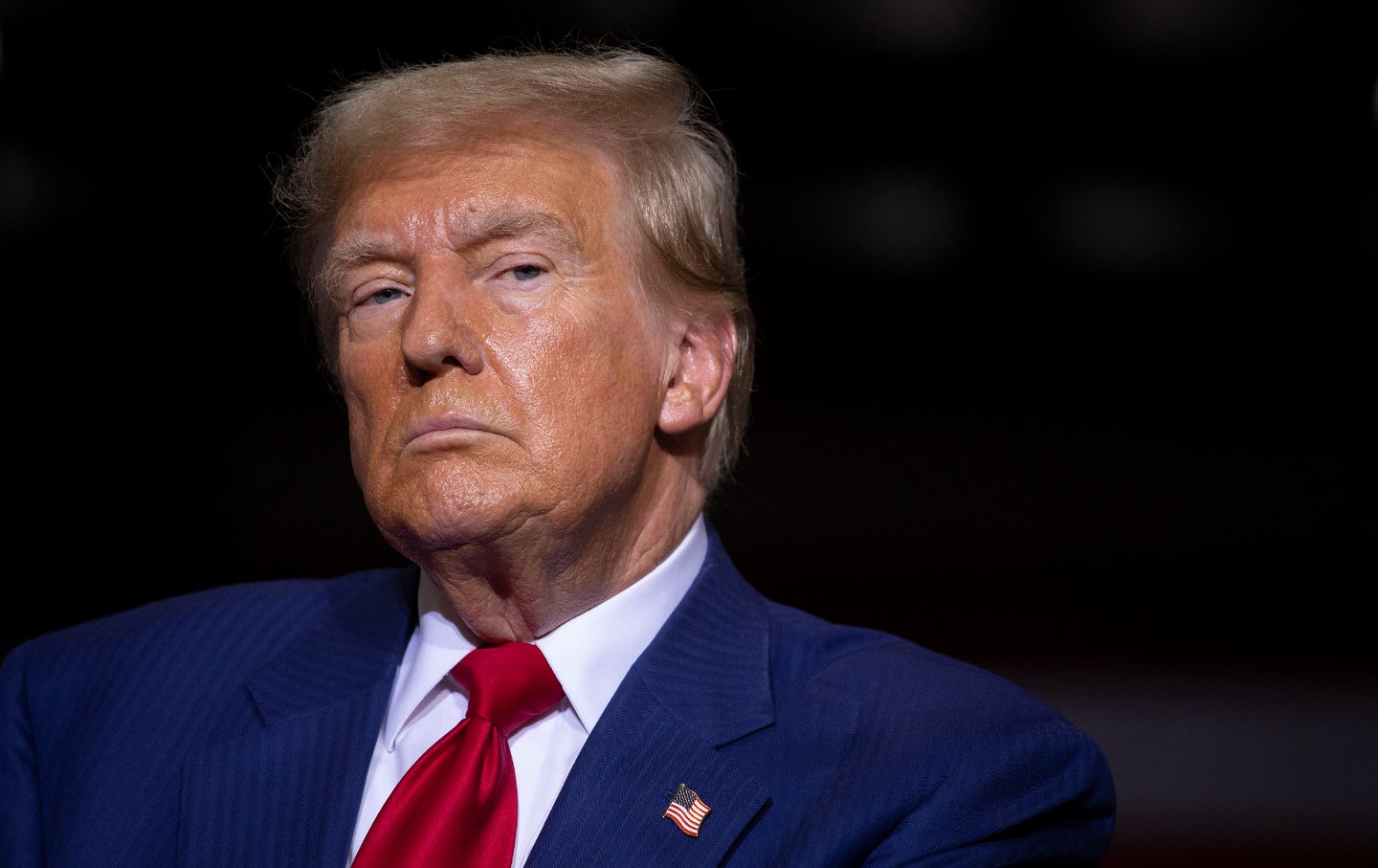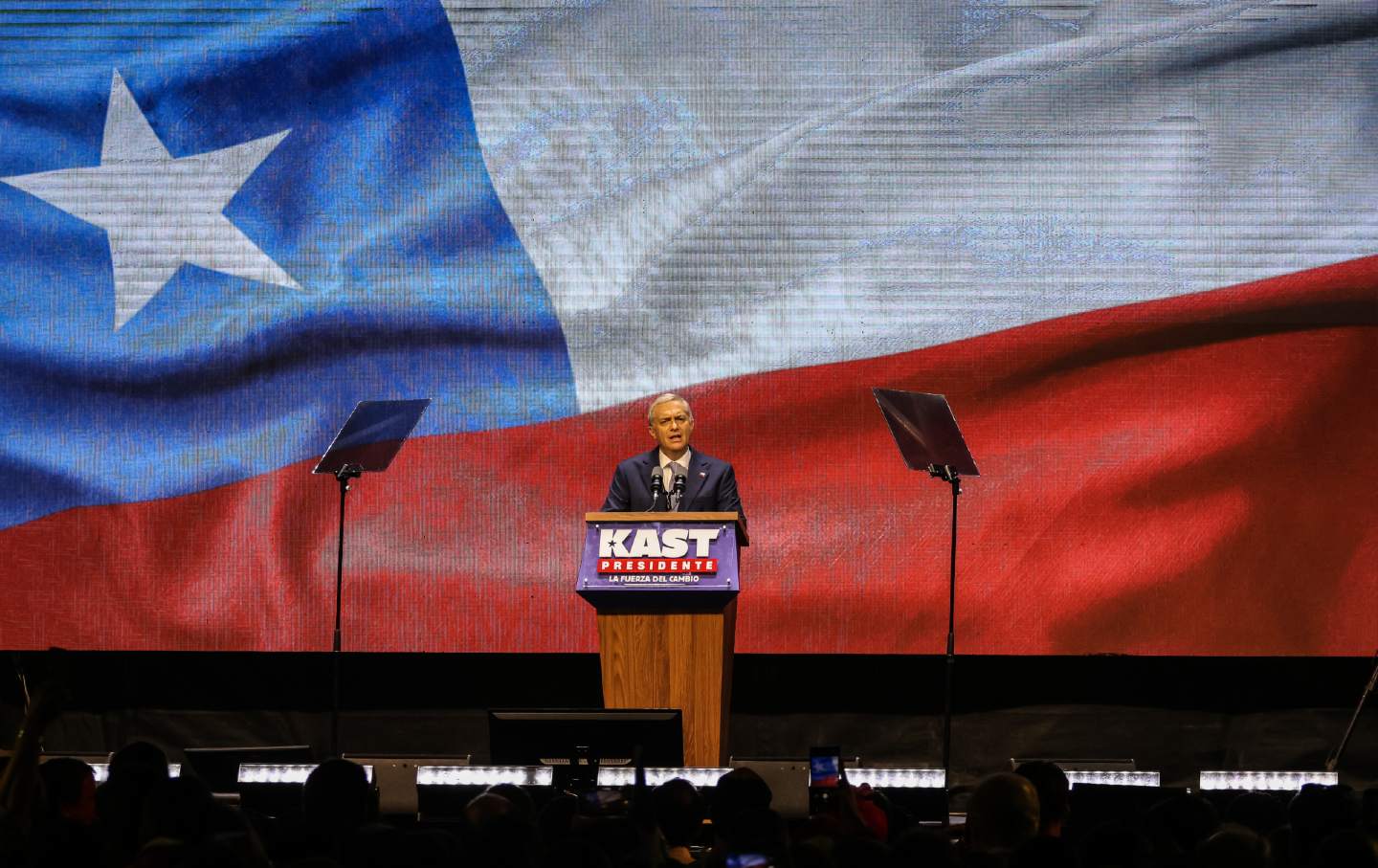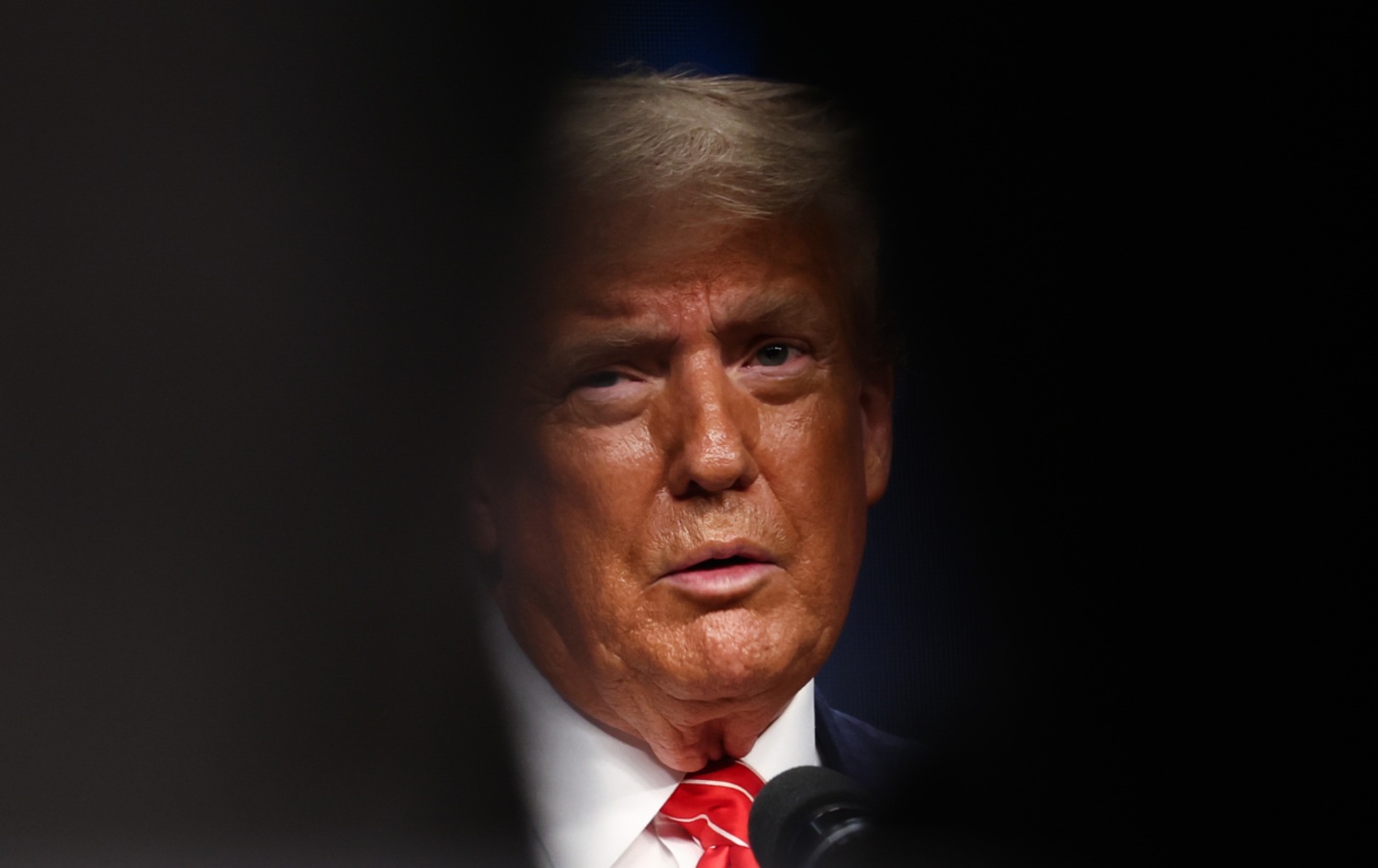Closing Guantánamo Won’t Be Enough
Decades later, the harm and the crimes associated with Guantánamo continue.

This article originally appeared at TomDispatch.com. To stay on top of important articles like these, sign up to receive the latest updates from TomDispatch.com.
There can be little question that the grim prison at Guantánamo Bay, Cuba, which still shows no sign of closing anytime soon, is a key legacy—in the worst sense imaginable—of America’s post-9/11 forever wars. I’ve been covering the subject for decades now and that shameful legacy has never diminished.
Last month, in response to an article wrote for TomDispatch—one of dozens, I’m sad to say, that I’ve done on Guantánamo over these endless years—I received a surprise e-mail: an invitation to attend a meeting at the British Parliament. A group known as the All Party Parliamentary Group (APPG) for Closing the Guantanamo Bay Detention Facility, formed this April, was gathering for the second time. Its stated purpose is “to urge the U.S. administration to close the Guantánamo Bay detention facility, to ensure the safe resettlement of those approved for release, and to ensure that due process is expedited for all the remaining prisoners.” Nine members of the House of Parliament and four Members of the House of Lords have already joined the group.
Thirty men remain in custody at that infamous American prison in Guantánamo Bay, Cuba. Sixteen of those detainees have finally been cleared for release; they are, that is, no longer subject to criminal charges or considered a potential danger to the United States and yet they still remain behind bars. Three other prisoners have never either been charged with a crime or cleared for release. Ten more are still facing trial, while one has been convicted and remains in custody there. For the APPG, the release of those 16 cleared detainees is a paramount goal.
That meeting I attended included a handful of MPs from all parties, as well as leading figures from British organizations that have been supporting justice for Guantánamo’s detainees for decades. Also present were two former detainees. One was Moazzem Begg, among the first prisoners released in 2005 and repatriated to England, where he is now a senior director at CAGE, an advocacy group focused on the remaining Gitmo detainees. In 2006, he published Enemy Combatant: My Imprisonment at Guantanamo, Bagram, and Kandahar, an early account of the injustices and cruelties in America’s war-on-terror prisons. The other was Mohamedou Salahi, whose book Guantánamo Diary led to the dramatic film The Mauritanian about his life at that infamous prison. A third former detainee, Mansoor Adayfi, author of Don’t Forget Us Here, had been transferred from Gitmo to Serbia in 2016. Though invited to attend, his visa wasn’t approved in time.
That meeting was but one of several recent events in which organizations outside the United States have issued detailed impassioned calls for this country to finally address the ongoing nightmare it created so long ago at Guantánamo.
Site Visits and UN Reports
In April, Patrick Hamilton, the head of the International Committee of the Red Cross (ICRC), made a site visit to Guantánamo and issued “a rare statement of alarm.” It was, as New York Times reporter Carol Rosenberg pointed out, the ICRC’s 146th visit to the prison since it opened in January 2002. That short statement urged American officials to address the deteriorating health of the prisoners there, concluding, “The planning for an aging population,” it concluded, “cannot afford to wait.”.
Then, in mid-June, the UN Human Rights Council followed up its own site visit by issuing a comprehensive, devastatingly critical report. Fionnuala Ni Aoláin, that council’s special rapporteur on the promotion and protection of human rights and fundamental freedoms while countering terrorism, focused on the potential war crimes and “crimes against humanity” committed against the detainees during and after their time at that island prison, now in its 21st year of existence.
Ni Aoláin was the perfect person for the job. She’s long defended human rights and international law, with a particular focus on issues of justice and human dignity. In 2013, she co-edited Guantánamo and Beyond: Exceptional Courts and Military Commissions in Comparative Perspective. Her 2023 report, clear, fact-based, and measured in tone, is in many ways a step above that of any of its predecessors.
Hers was, of course, anything but the first UN report to address the sins of Guantánamo. In 2010, the UN Human Rights Council prepared a detailed report on “global practices in relation to secret detention in the context of countering terrorism.” It focused on violations of international law carried out globally, often involving exceptionally cruel treatment and outright torture. Alongside sections on countries throughout Africa and the Middle East that abused captives, the torture and misuse of prisoners in the American war on terror at CIA black sites around the world and Guantánamo Bay took center stage. The study focused special attention on the lack of accountability when it came to Americans who had implemented or abetted the mistreatment and secret detention of prisoners.
Twelve years later, in March 2022, Ni Aoláin, five years into her role as special rapporteur wrote a follow-up to the report, highlighting “the abject failure to implement the recommendations” of that study and the “tragic and profound consequences for individuals who were systematically tortured, rendered across borders, arbitrarily detained, and deprived of their most fundamental rights.” Her update “reiterates the demand that accountability, reparation, and transparency be implemented by those states responsible for these grave human rights violations.”
Now, she has issued her new 23-page report, adding significantly to the debate over liberty and security that has defined discussions over Guantánamo since its birth in January 2002.
A Singular Report
A notable distinction between this report and those that preceded it is the access the special rapporteur was granted by the Biden administration. It was, in fact, the first visit ever to Guantánamo by an independent UN investigator. After two decades in which administration after administration placed severe restrictions on journalists as well as non-governmental and international organizations when it came to covering that prison, the Biden administration granted Ni Aoláin remarkably full access “to former and current detention facilities and to detainees, including ‘high value’ and ‘non-high value’ detainees.”
The interviews she conducted with those still imprisoned there were both confidential and unsupervised. She was allowed to deal with “military and civilian personnel, military commission personnel, and defense lawyers.” She also “interviewed victims, survivors, and families of victims of the September 11, 2001, terrorist attacks, former detainees in countries of resettlement or repatriation, and human rights and humanitarian organizations.” Ni Aoláin commended the Biden administration for allowing such unprecedented access. “Few states,” as she puts it, “exhibit such courage.”
Popular
“swipe left below to view more authors”Swipe →In the process, she drew a uniquely sweeping picture of Guantánamo—from the period after the horrifying 9/11 attacks through the widespread and gruesome torture of prisoners at CIA black sites to the grim details of detention at Gitmo itself to the often unjust and harmful fates of the detainees who were finally released to the persistent challenges that lie ahead. It’s the first report to tie together, historically as well as legally, the many grim pieces of the post-9/11 story that have previously been underappreciated.
Like its predecessors, Ni Aoláin’s report reiterates the sins of Guantánamo: the physical and psychological abuse and outright cruelties committed there and the lack of any access to justice for its prisoners. She also reminds us that “the vast majority of the men rendered and detained there were brought without cause and had no relationship whatsoever with the events that took place on 9/11.” She calls out the United States for its widespread ongoing violations of human rights and international law and mentions numerous times that the way it dealt with its detainees amounted to “cruel, inhuman, and degrading treatment.”
Her report, however, also potentially shifts the never-ending discussion of Guantánamo to new ground.
Putting the Focus on the Prisoners
As a start, Ni Aoláin looks beyond policymaking to the more subtle forms of injustice and harm that became the daily essence of Guantánamo. She particularly focuses on what she calls the “arbitrariness” and the damage it has caused. “Arbitrariness,” she concludes, “pervades the entirety of the Guantánamo detention infrastructure,” leading to a persistent lack of predictability in treatment. While Standard Operating Procedures (SOPs) do exist when it comes to “detainee reception and transfer, restraints, cell block searches, mess operations, religious accommodations, and medication distribution,” the deeper reality has been one of constant, cruel, and unpredictable deviations from those SOPs.
In fact, “arbitrariness, confusion, and inconsistency” define life at Guantánamo and have only been exacerbated by the secrecy with which those SOPs are guarded, further intensifying the cruel and inhuman treatment that has always defined that prison. Ni Aoláin suggests that it’s finally time for transparency to come to Gitmo. For example, many of the detainees suffer from the long-term effects of torture, a past all too lacking in transparency, and neither they nor their lawyers have access to their unclassified medical files.
She underscores her focus on finally bringing humanity to Gitmo by arguing that the widespread abuses Americans committed over the years, including by setting up a prison offshore of American justice, also significantly impacted the families of those who were killed in the attacks of September 11, 2001. She begins with torture, suggesting “that the systematic rendition and torture at multiple (including black) sites and thereafter at Guantánamo Bay, Cuba—with the entrenched legal and policy practices of occluding and protecting those who ordered, perpetrated, facilitated, supervised, or concealed torture—comprise the single most significant barrier to fulfilling victims’ rights to justice and accountability.” In her view, the use of torture was “a betrayal of the rights of victims,” too, by making the holding of trials impossible to this day and so making both accountability and closure inconceivable for the victims’ families.
While widening the lens to include a larger pool of victims, Ni Aoláin also widens the time frame. The mistreatment of detainees at Gitmo, she emphasizes, continues to this day. “Regrettably,” she writes, “the vast majority of detainees continue to experience sustained human rights violations beginning with the very process of transfer to the country of return or resettlement.”
In fact, the transfer of former prisoners from that prison to countries like the United Arab Emirates (UAE), Serbia, Kazakstan, and Slovakia has often resulted in yet more degradation, including utter social ostracism, the inability to obtain work, or even additional transfers to countries where yet more cruel and inhuman treatment has subsequently occurred. Sadly, for those “released” from that prison, the term “Guantanamo 2.0” best describes their situations.
One case in particular has been a focal point for the APPG in London: Ravil Mingazov, a Russian citizen granted asylum in Great Britain. He was captured in Pakistan in 2002. Accused of being associated with al-Qaeda and the Taliban, he would then be transported to Gitmo where he remained until 2017 when he was cleared for release to the UAE. After his arrival there, however, he was again imprisoned, despite assurances that his release would include rehabilitation and support for rebuilding his life. He’s now been detained there for six years. In 2021, reports circulated that the UAE was trying to send Mingazov back to Russia, where he would face probable imprisonment and mistreatment. To make matters worse, for the past two years, his family has had no news of him.
Ni Aoláin also highlights American attempts to destroy certain parts of Guantánamo and so functionally erase the record of what went on there. She calls instead for “the preservation and access to both prior and present detention sites,” as well as medical records and digital evidence. The crimes committed at Guantánamo, she emphasizes, need to be kept on the record and addressed, adding that “the U.S. government has an ongoing obligation to investigate the crimes committed [there], including an assessment of whether they meet the threshold of war crimes and crimes against humanity.”
Worse yet, redress for the victims of the 9/11 attacks and their families remains lacking. They continue to need treatment in ways not provided for and she recommends a “comprehensive audit of existing medical support (physical and psychological) for victims and survivors” and a commitment “to comprehensive lifelong holistic support for survivors.”
Succinct, measured, and profoundly disturbing, her report calls for a way forward that directly addresses the crimes of the past, including the need for public apology, compensation to former detainees, and the shutting down of that infamous prison. Her message: After all these years, even decades, the harm and the crimes associated with Guantánamo are still unending.
Where We Are Now
While the UN, the ICRC, the British Parliament, and various nongovernmental organizations focus on Guantánamo’s sins and its painful legacy, the United States continues to fail to close the prison, even though the need for closure was acknowledged in 2006 by no less than its “founder,” President George W. Bush. On July 14, when the House passed its version of the latest National Defense Authorization Act, it not only kept in place a prohibition on the use of funds to close Guantánamo but extended a congressional ban on using such funds to transfer detainees to the United States or six countries in the greater Middle East, making the end of Gitmo that much harder.
With her steady hand and deployment of facts, Ni Aoláin was unsparing in her conclusions about the injustice and perpetual cruelty that still is Guantánamo. Yes, she appreciates any movement forward, even at this late date, including “the openness and willingness” of the Biden administration to allow her to visit the prison. Still, she couldn’t be clearer on what, 21 years later, is needed: accountability for the perpetrators and restitution for the victims.
Closing the prison, if it ever actually happens, will not be enough. Sadly, even such an act will not bring true closure to the sins of America’s forever prison.
Time is running out to have your gift matched
In this time of unrelenting, often unprecedented cruelty and lawlessness, I’m grateful for Nation readers like you.
So many of you have taken to the streets, organized in your neighborhood and with your union, and showed up at the ballot box to vote for progressive candidates. You’re proving that it is possible—to paraphrase the legendary Patti Smith—to redeem the work of the fools running our government.
And as we head into 2026, I promise that The Nation will fight like never before for justice, humanity, and dignity in these United States.
At a time when most news organizations are either cutting budgets or cozying up to Trump by bringing in right-wing propagandists, The Nation’s writers, editors, copy editors, fact-checkers, and illustrators confront head-on the administration’s deadly abuses of power, blatant corruption, and deconstruction of both government and civil society.
We couldn’t do this crucial work without you.
Through the end of the year, a generous donor is matching all donations to The Nation’s independent journalism up to $75,000. But the end of the year is now only days away.
Time is running out to have your gift doubled. Don’t wait—donate now to ensure that our newsroom has the full $150,000 to start the new year.
Another world really is possible. Together, we can and will win it!
Love and Solidarity,
John Nichols
Executive Editor, The Nation
More from The Nation

Brace Yourselves for Trump’s New Monroe Doctrine Brace Yourselves for Trump’s New Monroe Doctrine
Trump's latest exploits in Latin America are just the latest expression of a bloody ideological project to entrench US power and protect the profits of Western multinationals.

Chile at the Crossroads Chile at the Crossroads
A dramatic shift to the extreme right threatens the future—and past—for human rights and accountability.

The New Europeans, Trump-Style The New Europeans, Trump-Style
Donald Trump is sowing division in the European Union, even as he calls on it to spend more on defense.

The United States’ Hidden History of Regime Change—Revisited The United States’ Hidden History of Regime Change—Revisited
The truculent trio—Trump, Hegseth, and Rubio—do Venezuela.

Mahmood Mamdani’s Uganda Mahmood Mamdani’s Uganda
In his new book Slow Poison, the accomplished anthropologist revisits the Idi Amin and Yoweri Museveni years.

The US Is Looking More Like Putin’s Russia Every Day The US Is Looking More Like Putin’s Russia Every Day
We may already be on a superhighway to the sort of class- and race-stratified autocracy that it took Russia so many years to become after the Soviet Union collapsed.


